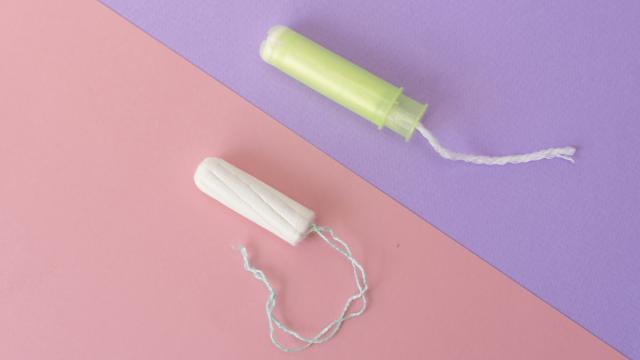If you visit any tampon or pad aisle in a supermarket in Australia, you’re sure to find a number of different brands and styles of tampons. But one that seldom appears on shelves are tampons with applicators. Here’s why.
Most tampon packets sold in Australia contain individually wrapped tampons, which you insert digitally. If you go to the United States and a number of other countries around the world, however, tampons encased in applicators are a more common sight.
An applicator is usually a plastic mechanism to assist inserting the tampon into the right position. Once you’ve popped it where it needs to be, you pull the casing out to release the tampon into position. For some, this is the preferred method as it helps to avoid using fingers, but why applicator-encased tampons are not more readily available outside of the US is interesting to note.
The modern tampon, with the applicator, was developed in 1929 by Dr Earle Haas with a cardboard applicator and bought by the major US brand, Tampax, in 1936.
The reason the applicator was developed, however, was due to some of the societal norms held at the time — namely the idea of women touching their genitals regardless of the purpose.
Speaking to The Atlantic in 2015, an author on the history of menstrual hygiene Sharra Vostral said even with the applicator preventing digital contact, tampon’s were divisive at the time.
“For many people, there was a lot of discomfort with the idea of women touching themselves in any way in their vaginal or labia area, especially young girls,” Vostral told The Atlantic.
“A lot of people argued that [tampon use] was not only inappropriate because it might break the hymen, but it might be also pleasurable and might be a way for girls to experience orgasmic pleasure.”
In later decades, new patents developed by European inventors would do away with the applicator. German gynecologist Dr. Judith Esser worked on creating the o.b. tampon — the first tampon without the then-cardboard applicator.
A former engineer, Jim Keighley, at Proctor & Gamble also told The Atlantic that since the non-applicator option was invented, it had outsold the applicator options for years in European countries.
“If you interview women in Europe and ask why they like digital tampons, they’ll tell you about [environmental] concerns. They’ll also tell you that it’s a hygienic concern — that they don’t trust the applicator being inserted inside their bodies,” Keighley said to The Atlantic.
“Consumers develop very strong opinions on usage habits — polar opposites, for the same reason.”
Like countries in Europe, Australia too has a preference for non-applicator tampons and while it’s likely to do with the availability of them, a limited uptake when they are available might also be the case.
Although they’re still available in major supermarkets around the country, non-applicator options outstrip them in range and quantity.
While there isn’t a clear answer why per se, it’s likely Australia’s preference is related to having closer cultural ties to the UK and Europe over the US and that extends to the applicator-or-no-applicator discussion too.
[referenced url=”https://www.lifehacker.com.au/2020/01/does-ibuprofen-really-reduce-period-flow/” thumb=”https://www.lifehacker.com.au/wp-content/uploads/sites/4/2020/01/meangirls2-410×231.jpg” title=”Does Ibuprofen Really Reduce Period Flow?” excerpt=”Periods suck. If you’ve had one, you know what’s up. If you haven’t, you’ve probably heard someone in your life complain about how crippling they can be. One tweet has gone viral claiming everyday hero, ibuprofen, can supposedly reduce your period’s flow by “50 per cent”, which would be life-changing for some. Let’s fact check this claim.”]
By the way, don’t forget you can save on your next grocery shop with one of our Coles promo codes.

Leave a Reply
You must be logged in to post a comment.